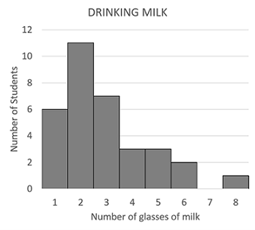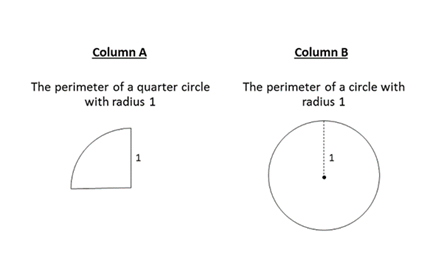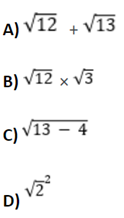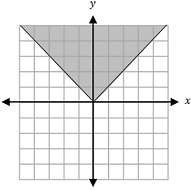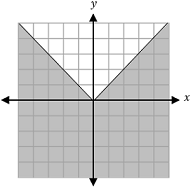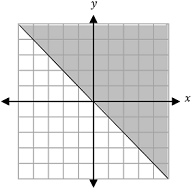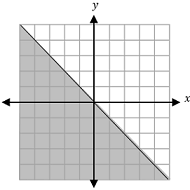ISEE Format Breakdown
The ISEE consists of four sections: Verbal Reasoning, Quantitative Reasoning, Reading Comprehension, and Mathematic Achievement. On this page, we will present you with sample questions from each section, according to their order of appearance on the exam.
Each section will include four sample questions, divided both by level and sub-topic as indicated. We recommend viewing all of the questions, even if you are only interested in one of the levels presented.
This will provide more familiarity with the types of questions asked on the test, even if they are not all at the exact level you will face.
ISEE Verbal Reasoning Sample Questions
The first section of the ISEE test is Verbal Reasoning, which consists of two types of questions – synonyms and sentence completion. The synonym questions provide a word and then list four options from which to identify the synonym. In the sentence completion questions, a sentence appears with one or two words missing, and there are four options of words to use in the indicated spaces in order to complete the sentence. You are given 20 minutes to complete this section.
|
Question 1 Verbal Reasoning: Synonyms – Middle Level |
|
Identify the synonym: NIMBLE |
|
Answer & Explanation ▼ | ▲ The correct answer is (D) — swift. Nimble means "able to move or learn quickly and easily." Answer (A), asleep, is incorrect because someone who is asleep is quite the opposite of nimble, as he is not even conscious. Answer (B), candid, means "honest." This is unrelated to being quick or a quick learner. Answer (C), protective, is also unrelated to being nimble. Answer (D), swift, means "moving or able to move very fast." It is the closest in meaning to nimble, and it is therefore the correct answer. |
|
Question 2 Verbal Reasoning: Synonyms – Upper Level |
|
Identify the synonym: VERBOSE |
|
Answer & Explanation ▼ | ▲ The correct answer is (D) — wordy. Verbose is an adjective that means "using or containing many words." Answer (A), contrite, is incorrect because it means "regretful," which has nothing to do with words. Answer (B), succinct, is an adjective that means "concise, using few words." It is the opposite of verbose, so it is incorrect. Answer (C), verbal, means "spoken" or "related to words." It refers to the presence of or relation to words, but not to their quantity, so it is not a synonym for verbose. Answer (D), wordy, is an adjective that means "using an excessive amount of words for the given context." It is the closest in meaning to verbose, and it is therefore the correct answer. |
If you’re not sure what the word means, see what you can figure out about the word based on its root and affixes. For example, a word ending in “tion” is likely a noun that refers to a concept or something made up of many people or parts, such as inflation or organization. This will probably at least help you narrow down your choices.
|
Question 3 Verbal Reasoning: Sentence Completion – Middle Level |
|
Complete the sentence: Sculptor Andy Goldsworthy explains that though challenging, he is _____ to work with transient materials like leaves and petals out of a responsibility to work with nature. |
|
Answer & Explanation ▼ | ▲ The correct answer is (A) — compelled. Sculptor Andy Goldsworthy explains that even though it is challenging, he is compelled to—which means that he feels he must—work with transient (not lasting long) materials out of a responsibility to work with nature. The clue in this sentence is "though it is challenging" as well as “out of a responsibility”— which indicates that the word that is missing describes him being driven to do something despite his own preference. Therefore, (A) is the correct answer. Answer (B), inept, means "lacking skill" or "not suitable." Someone can be unsuitable to work with transient materials because it is more challenging, but it does make sense to say that someone lacks the skill to do something even though it is more challenging. Answer (C), unrestrained, means "not controlled or limited." The fact that something is challenging would not be said in the first place to control or limit him from having the choice to use a specific type of material. It might dissuade him from doing so, but a word having to do with binding and control is not relevant in this context. Answer (D), productive, means "working towards or achieving good results." This does not even make literal sense in the sentence, as one can be productive, or it can be productive to do something, but a person cannot be described as “productive to do something.” |
|
Question 4 Verbal Reasoning: Sentence Completion – Upper Level |
|
Complete the sentence: The first step in selling a publication is making sure you find a(n) _____ distributor to stock and _____ the books to the appropriate stores. |
|
Answer & Explanation ▼ | ▲ The correct answer is (B) — adequate . . . deliver. The first step in selling a publication (printed product) is making sure you find an adequate distributor to stock and deliver the books to the appropriate stores. The first missing word should describe a worthy distributor, and the second an action that a distributor would do with the books. In answer (B), adequate means "suitable" or "competent," which describes the type of distributor one would look for. Deliver (“to the appropriate stores”) accurately describes what a distributor does with the books. Therefore, answer choice (B) is the correct answer. In answer (A), adept means "fitting for the task," which can be used to describe a distributor, but to foster means to "promote the development of" or "give care or accommodation," which is not a suitable verb here since it is not an action that needs to be done to the books in this context. In answer (C), liberal means "generous, abundant, or tolerant and open-minded," which is not a suitable adjective in this context as it does not accurately describe the books in the sentence. In answer (D), ungainly means "awkward, clumsy, or difficult to handle," which does not describe a good distributor. In addition, release is a verb usually associated with the launch of a book rather than its distribution, so it is not a good word here either. |
Here’s a tip for the sentence completion questions:
If the answer is not clear to you, read the sentence with each word you are considering and see what sounds the best. If more than one fit, look for clues in the sentence that may let you know which word is more on-topic.
For example, in the sentence, “Mark walked ____ to the store and got there right before it closed,” both the words “quickly” and “cautiously” fit grammatically and thematically into the space provided.
However, since there is nothing in the sentence to suggest why Mark would be walking cautiously, and the fact that the store was closing could be a reason for going quickly, “quickly” is clearly the better answer.
If you are looking for additional Verbal Reasoning practice questions, try one of our full PrepPacks below!
There are 40 questions on this section of the ISEE. Our PrepPacks include two full simulations of the test for a total of 80 Verbal Reasoning questions, providing you with everything you need to master this section.
ISEE Quantitative Reasoning Sample Questions
The next section of the ISEE test is Quantitative Reasoning, which consists of math word problems and quantitative comparisons. The word problems include a number of different basic math subjects that you will need to be familiar with, but the problems are generally designed so that they can be solved primarily with logical thinking. The comparison problems simply ask you to identify which of two expressions is greater in value, if they are equal, or if there is not enough information to determine. You have 35 minutes to complete this section.
|
Question 5 Quantitative Reasoning: Word Problems – Middle Level |
|
Mr. Collins asked his students to write down the number of glasses of milk each of them drink in a week. The bar graph below represents that data:
If a new student who drinks 7 glasses of milk in a week would join Mr. Collins class, what would happen to the range of the data? |
|
Answer & Explanation ▼ | ▲ The correct answer is (B). The range of a set of data is the difference between the highest value and the lowest value. Therefore, unless one of these values changes, nothing happens to the range. In Mr. Collins original class, since the highest number of glasses of milk drunk by a student is eight glasses, the highest value of the set of data is 8. Since the lowest number of glasses of milk drunk by a student is one glass, the lowest value of the set of data is 1. Therefore, if a new student who drinks seven glasses of milk per week joins Mr. Collins’s class, the highest value of the data will stay the same (8), and the lowest value of the set of data will also stay the same (1). Therefore, the range of the set of data would not change, and the correct answer is (B). |
|
Question 6 Quantitative Reasoning: Word Problems – Upper Level |
|
The Special Car Company manufactures 𝑓 cars per day. On Mondays and Tuesdays, they produce three fewer cars than they do on the other days, due to repair work done on used cars. The company operates five days a week. Which of the following expressions can be used to model the total number of cars manufactured per week? |
|
Answer & Explanation ▼ | ▲ To solve this problem, create an expression that models the total number of cars manufactured per week. You know that 𝑓 cars are manufactured per day and that the company operates five days a week. Thus, 𝑓 × 5 would be the number of cars manufactured per week if it were not for the repair work on Mondays and Tuesdays. You know that on each of these days the company produces three fewer cars, which is six fewer cars per week in total. Therefore, one may conclude that 𝑓 × 5 − 6 is the total number of cars manufactured per week, and the correct answer is (B). |
Here’s a tip for the math word problems:
Even if the question is not asking for an equation, but a normal number answer, your main focus should be determining which variables make up the equation. That way, you can determine the answer by solving a straightforward equation as opposed to keeping track of all the variables in the text.
Place the number it is asking you to find on one end of the equal sign represented by a letter or a question mark, then identify the relevant data from the question and convert them into numbers on the other side of the equal sign. Any other unknown variables you need in order to determine the answer should be represented by different letters and placed on this side of the equal sign along with the numbers.
For example, “How many grams [?] did a cat eat if he had three [3] equal meals [y] a day for a week [7]?”
3y X 7 = ? OR x = 3y X 7
21y OR x = 21y
|
Question 7 Quantitative Reasoning: Quantitative Comparisons – Middle Level |
|
|
|
Answer & Explanation ▼ | ▲ The correct answer is (B). Remember that all you need to know to get the answer is which value is greater, not the exact value of each column. The simplest way of solving this is by using logic, without any formulas. The perimeter of a circle is always going to be larger than the perimeter of a quarter circle. One can easily see from the picture that in column A, the two straight lines are taking a direct route from the curved line to meet each other, while in column B, starting from the same points, the lines take a much longer route around the circle. Therefore, we know the perimeter in column B must be greater. Alternatively, you can use the formula for finding the perimeter of a circle: 2πr, which here becomes 2π(1) since the radius (r) is 1. We can easily estimate the perimeter to be a little more than 6 since π is roughly 3.14 and we only need to multiply that by 2 according to the formula. The perimeter of the quarter circle will be a quarter of that (1.5) plus the two other lines, which we know are each 1. Therefore, we can calculate that the perimeter of the quarter circle is approximately 3.5, which is lower than 6. So clearly column B is greater than column A. |
|
Question 8 Quantitative Reasoning: Quantitative Comparisons – Upper Level |
|
|
|
Answer & Explanation ▼ | ▲ The correct answer is (A). In column A, if 𝑎 + 𝑏 = 0, and you know that 𝑏 is greater than 𝑎, then 𝑎 is a negative number and 𝑏 is the corresponding positive number, as that is the only way to get to 0 by adding. Since 𝑐 is greater than 𝑏, this means 𝑐 is positive as well. In column B, if 𝑐 is less than zero, that means it is negative. Since 𝑏 is less than 𝑐, it must also be a negative number. If the value in column A is a positive number, and the value in column B is a negative number, then column A is greater than column B, and the correct answer is A. |
Here’s a tip for the quantitative comparisons:
If you can easily determine the values of each expression, you can easily determine the answer. If this will take you a while, check to see if there is something that gives away which is greater without solving it, as you are limited in time.
Similarly, if you don’t have enough information to determine the value of each column, you still may have enough information to determine which is greater. For example, if you are given 3x + 1 and 3x – 1, you may not know what the value of x is, but you know that each column begins with the same value, and then the first adds while the second subtracts, so the first column must be greater.
Now that you understand what the Quantitative Reasoning section looks like, having seen examples of both word problems and quantitative comparisons, we are ready to move on to the next section, which takes on a different format of assessment.
We invite you to practice a variety of questions like the ones above in one of our full PrepPacks linked below!
The ISEE test contains 37 Quantitative Reasoning questions. Our PrepPacks include two full practice tests, amounting to over 70 Quantitative Reasoning questions, and much more.
ISEE Reading Comprehension Sample Questions
Next on the test is the Reading Comprehension section, in which students are tested with regard to their ability to comprehend and analyze texts. Instead of providing standalone questions, the test now presents six passages, each accompanied by six questions designed to assess the ability to understand the content of the text, pick up on central themes, draw conclusions, and more. You must complete this section within 35 minutes.
|
Question 9 – 10 Reading Comprehension – Middle Level |
|
Read the paragraph and answer the questions: In the wild, packs of animals are usually arranged in a strict hierarchy. In most animal species, the young are in the lower levels, followed by the females, while the males are highest up. Yet, within the males there are also ranks. For instance, when observing a pride of lions, it promptly becomes clear that one male is feared by all the others. Furthermore, among the other males in the group, there are ones considered “higher up” and ones that are lower in rank. The leading male of a pack is referred to as the alpha male, and it may be followed by males ranked as beta, gamma, then omega. The higher up the hierarchy an animal is located, the more privileges it has. 1. The main purpose of the paragraph is to explain... 2. In the fourth sentence, the word "pride" most nearly means... |
|
Answer & Explanation ▼ | ▲ 1. The correct answer is (B): hierarchy among animals. Answer (B) is the best answer because the entire paragraph discusses this topic, and everything in the paragraph relates to it. Answer (A) is incorrect because it is only one small part of the paragraph. Lion prides are mentioned only as an example of the topic. Answer (C) is incorrect because alpha males are only part of the structure of hierarchies, and the paragraph does not give this aspect significantly more focus than other aspects, such as the other ranks. There is essentially half of a sentence devoted specifically to alpha males, and it does not even discuss their behavior at all. Answer (D) is incorrect because the advantages of higher rank are mentioned only in one line, and no specific privileges are even mentioned. Even though it is the last line of the passage, the passage does not build up to this point, but rather tells us a series of related things about hierarchies, culminating with this one. 2. The correct answer is (B): pack. Answer (B) is the correct answer because a pack of lions is called a pride. The sentence refers to observing a pack of lions. Answers (A), (C), and (D) are incorrect because they have other meanings. In addition, “ranking” (C) and “wild” (D) can be eliminated because they do not construct a logical sentence, and “leader” (A) does not make sense considering the content of the rest of the sentence—one does not observe multiple lions while observing one “leader.” By replacing the word “pride” with each of the options, one can clearly see that “pack” is the correct answer. |
|
Question 11 – 12 Reading Comprehension – Upper Level |
|
Read the paragraph and answer the questions: In the Tanzanian village of Liyasongoro, located 1,700 meters up the south slope of Mount Kilimanjaro, Wilbert Minja has lived for more than 60 years, and lately he has been worried. The weather is all wrong, he says: "Rain falls when it should not and does not come when it should." He recites stories describing how new settlers used to flock to the mountainside, lured by its rich soil and abundant fresh water. Now, he says, they are abandoning their failed homesteads. The mountain streams are running dry, and the dusty ground that was once fertile and full of life has turned barren. 1. Which of the following statements cannot be concluded from the passage? 2. The writer most likely states how long Wilbert Minja has been living in Liyasongoro in order to... |
|
Answer & Explanation ▼ | ▲ 1. The correct answer is (C): Life in a rural mountain village is hard This sort of question is best answered by elimination. Answer (A) is incorrect because the paragraph does refer to this in the fourth sentence: "...they are abandoning their failed homesteads." Answer (B) is incorrect because the paragraph does indicate this in the fifth sentence: "The mountain streams are running dry, and the dusty ground that was once fertile and full of life has turned barren." Answer (D) is incorrect because the paragraph does state this in the third sentence: "...new settlers used to flock to the mountainside, lured by its rich soil and abundant fresh water." Answer (C) cannot be concluded from the paragraph. The text does not make a generalization from the specific difficulties in the Kilimanjaro area to all rural mountain villages. This, along with the fact that all of the other options can be concluded from the text, makes (C) the right answer. 2. The correct answer is (A): in order to validate Wilbert Minja’s claim that the recent weather is uncharacteristic. Answer (A) validates the main claim of the paragraph (that the weather has recently changed for the worse) by establishing the source as someone who would know this very well. By noting that Wilbert Minja has been living in the area for 60 years, it can be inferred that he must be very familiar with the local weather patterns over a long period of time, and his account that it has changed can therefore be trusted. Answer (B) is incorrect because the paragraph does not state Wilbert Minja’s age explicitly, and the emphasis is on how long he’s lived in the area, not how long he’s been alive. Answer (C) is incorrect because this would go against the main idea stated in the paragraph. An author would not likely include a piece of information specifically to make his point sound less credible. Answer (D) is incorrect because there is no mention in the paragraph that Wilbert Minja is a farmer, so the statement does not accomplish this at all. |
Consider these tips while solving reading questions:
Since there are six questions for the same passage, you should certainly make sure to read the whole thing. However, some people find it helpful to read the questions first, or at least as many of them that they can keep in mind at once so that they can already determine the answers as they read the passage for the first time.
When determining themes, main ideas, or purposes, try to see if there is a common denominator to all of the things discussed in the passage, or if the passage works toward a specific goal at the end or spends its time supporting something stated towards the beginning. This will tell you what the overarching topic is, what the author was trying to accomplish, or what idea is being explored
The samples above should give you a general feel for the Reading Comprehension section.
If you want to see more and practice reading and analyzing passages like the ones that will appear on the test, just click below!
The ISEE Reading Comprehension section contains 36 questions, and our detailed prep pack includes over 70 practice questions divided into two full-length simulations.
ISEE Mathematics Achievement Sample Questions
We’ve now reached the Mathematics Achievement section, the final topic of problem-solving on the ISEE. This section consists entirely of math word problems. Unlike the quantitative reasoning section, this one aims to test your knowledge and skills in mathematical concepts you learned in school, so a broader understanding of the concepts is required. The problems encompass many math subjects, centering around algebra, geometry, probability, and measurements. You are given 40 minutes to complete this section.
|
Question 13 Mathematics Achievement: geometry/measurements - Middle Level |
|
A tennis player is standing 2 meters away from a net whose height is one meter, as shown in the diagram.
From what height does the tennis player need to hit the ball, for it to just pass over the net and land 4 meters away from the net? |
|
Answer & Explanation ▼ | ▲ The correct answer is (B). This problem requires that you know that all corresponding pairs of lines between similar triangles (triangles that share the same angles) share the same ratio in size. If you calculate the ratio between the length from the net to the landing spot and the length from the throwing spot to the landing spot, you can apply this same ratio to the height of the net in order to determine the height he would need to throw from to land 4 meters from the net (at a slope that will only just pass above the net). The ratio of the distance from the net (4m) to the distance from the ball (4m+2m = 6m) is 4:6. This must be equal to the ratio of the height of the net (1m) to the height of the ball where it is thrown from (?). In other words, 4:6 = 1:? This means 4 and 1 have the same relationship as 6 and our answer. You can simply calculate that 1 is a fourth of 4, so the answer must be a fourth of 6, which is 1.5. Alternatively, 4 and 6 must have the same relationship as 1 and our answer. 6 ÷ 4 = 1.5 So what number divided by 1 equals 1.5? Anything divided by 1 is the same number, so we know it is 1.5 |
Try this tip for geometry questions:
If you are missing sides or angles, see if the other sides and angles can help you figure out what they are. Remember that equal angles mean equal lines, all angles add up to 180 degrees in a triangle, and there are 360 degrees in a circle.
|
Question 14 Mathematics Achievement: data/probability – Middle Level |
|
Ran rolled two six-sided dice one after the other. Which of the following probabilities equals 1/6? |
|
Answer & Explanation ▼ | ▲ The correct answer is (B). For the two dice to show the same number, the first die can show anything (probability = 1) and the second die needs to show the same number as the first die. Thus, there is only one favorable outcome for the second die (once the first die was rolled), and the probability with only one favorable outcome out of six is 1/6 . Therefore, the probability for the two dice to show the same number is 1 × (1/6) = 1/6 , and the correct answer is (B). |
|
Question 15 Mathematics Achievement: square roots/integers – Upper Level |
|
Which numerical expression does not represent an integer?
|
|
Answer & Explanation ▼ | ▲ The correct answer is (A). To solve this problem, you need to be familiar with the term integer, and the square root properties. An integer is any whole number (such as –5, 0 , or 15, and not 1.5, Square root properties: Any operation between numbers under the same square root can be solved, and then you can find the square root of that number. Therefore, Any two square roots multiplied or divided is the same as multiplying or dividing those numbers under the same square root. Therefore, Any square root that is squared cancels out and you are left with just the number. Therefore, 3, 6, and 2 are all whole numbers, so they are integers, and they are incorrect. Two separate square roots cannot be added or subtracted together. You must first solve for the roots, then you can add or subtract them. Therefore,
|
|
Question 16 Mathematics Achievement: algebra/graph plotting – Upper Level |
|
Which graph represents the solution set for the inequality 𝑦 ≥ |𝑥|? A)
B)
C)
D) |
|
Answer & Explanation ▼ | ▲ The correct answer is (A). |
Try this tip for graph plotting questions:
The y-axis is the one that goes up and down, as it is taller than an x. Right and up on the graph are always positive, and left and down are always negative. This is the same as on a number line.
This concludes all of the standard sample questions on this page, leaving only the essay to explore.
For more practice, check out the Mathematics Achievement section and all the others in one of the packs below.
The ISEE Mathematics Achievement section contains 47 questions. Our comprehensive preparation includes two full tests of this size, supplying you with 90+ math word problems to get you ready and stress-free come testing day.
ISEE Essay
After all of these sections are complete, there is one final part of the ISEE—the essay. You are given one short question to which you are expected to produce an essay in response. It is not scored, but it is meant to make an impression on the people reading it. This is your opportunity to show your writing and communication skills to the administration of whatever program you are applying to, as well as to express your individuality and prove to them that you should not be passed up on. You have 30 minutes to plan and write your essay.
Here are two sample Essay prompts that you can use to get an idea of the types of questions they might ask you:
1. Out of everything you have done in your life, what are you most proud of and why?
2. If you could spend one day anywhere in the world, where would you go and
who would you spend the day with?
You can use these prompts to practice writing essays, or simply to brainstorm ideas.
Do I need to Prepare for the ISEE?
Preparing for the ISEE will give you a much better shot at showing your potential and getting accepted to your school or program of choice. If you are unfamiliar with the types of questions asked and what they are looking to assess, you put yourself at a disadvantage in showing what you are capable of. The more sample questions you attempt, the more comfortable you will become answering questions in this format, and this will allow you more time and a clearer mind to focus on your answers and avoid careless mistakes and running out of time to answer. Additionally, the more you practice, the more relevant information you will review, and the better you will remember all of the concepts, formulas, rules, and information required to succeed on the test.
ISEE Practice Tests from TestPrep-Online
Access our full test prep for ISEE now, with full-length practice tests including hundreds of practice questions and answer explanations.
| Free ISEE Practice Resources | Full ISEE PrepPacks |
| ISEE Middle Sample Test | ISEE Middle Full Pack |
| ISEE Upper Sample Test | ISEE Upper Full Pack |
TestPrep-Online offers a unique, online testing experience. All of our test prep material is available online, giving you and your child the freedom to study whenever and wherever you want. Our test packages offer a user-friendly interface, which enables you to easily navigate through a multitude of practice tests, video tutorials, study guides, additional drills, and example test questions. Prepare your child from the comfort of your own home, without the added cost and hassle of a tutoring service.
What is a Good Score on the ISEE?
The ISEE uses a very simple method to score your test. Each question answered correctly provides you with one point. Any question answered incorrectly or left unanswered does not provide you with any points. You are given a score for each individual section as well as the test as a whole. Only the Essay is left unscored for the relevant school to view and judge for themselves. The score report you will receive breaks down your score in a number of different methods. The simplest and perhaps the most practical is the percentile score, which lets you know how your score compares with those of everyone else in your age group. For example, a score of 90% means that you scored better than 90% of students in your grade. For more information on how the test is scored, as well as explanations for the other types of scoring that appear on the report, you can view our ISEE Test Scores Interpretation page.
ISEE Test Registration & Dates
Students have the opportunity to enroll for a test date during the following periods: Fall (August-November), Winter (December-March), and Spring/Summer (April-July). It is important to note that registration for testing sessions will cease precisely two weeks before the scheduled testing date. This ensures that students have ample time to plan and prepare accordingly, allowing them to make informed decisions about the timing of their registration and avoid missing out on any testing opportunities.
To take the test you are required to pay a fee 110$-210$ depending on which testing option you choose. For more information on ISEE test dates and registration, Click Here.
What is the ISEE Test?
Watch the following video to learn everything you need to know about the ISEE test and how to score high on it. Understand the structure and format of the ISEE, try sample questions, and get important tips for acing this test.


The ISEE, Independent School Entrance Exam , ERB test and other trademarks are the property of their respective trademark holders. None of the trademark holders are affiliated with TestPrep-Online or this website.


